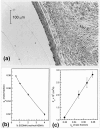Current Advancements in Transdermal Biosensing and Targeted Drug Delivery
- PMID: 30823435
- PMCID: PMC6427209
- DOI: 10.3390/s19051028
Current Advancements in Transdermal Biosensing and Targeted Drug Delivery
Abstract
In this manuscript, recent advancements in the area of minimally-invasive transdermal biosensing and drug delivery are reviewed. The administration of therapeutic entities through the skin is complicated by the stratum corneum layer, which serves as a barrier to entry and retards bioavailability. A variety of strategies have been adopted for the enhancement of transdermal permeation for drug delivery and biosensing of various substances. Physical techniques such as iontophoresis, reverse iontophoresis, electroporation, and microneedles offer (a) electrical amplification for transdermal sensing of biomolecules and (b) transport of amphiphilic drug molecules to the targeted site in a minimally invasive manner. Iontophoretic delivery involves the application of low currents to the skin as well as the migration of polarized and neutral molecules across it. Transdermal biosensing via microneedles has emerged as a novel approach to replace hypodermic needles. In addition, microneedles have facilitated minimally invasive detection of analytes in body fluids. This review considers recent innovations in the structure and performance of transdermal systems.
Keywords: Iontophoresis; drug delivery; electroporation; fluorescent biosensors; luminescent sensors; microfabrication; microfluidics; microneedle; transdermal biosensing.
Conflict of interest statement
The authors declare no conflict of interest.
Figures


























References
-
- Ita K. Transdermal delivery of drugs with microneedles: Strategies and outcomes. J. Drug. Deliv. Sci. Technol. 2015;29:16–23. doi: 10.1016/j.jddst.2015.05.001. - DOI
Publication types
MeSH terms
Substances
Grants and funding
LinkOut - more resources
Full Text Sources
Other Literature Sources
Medical

